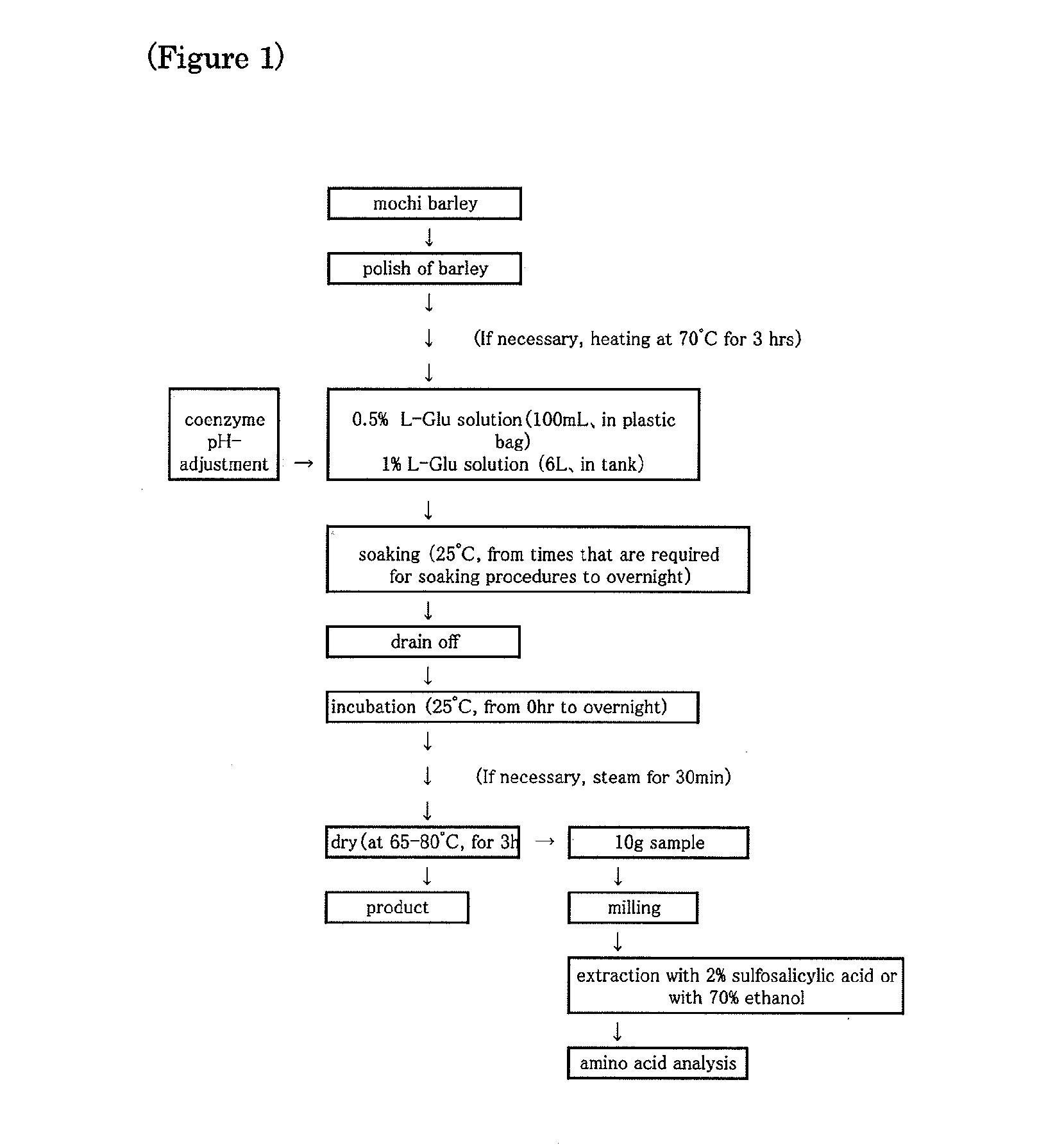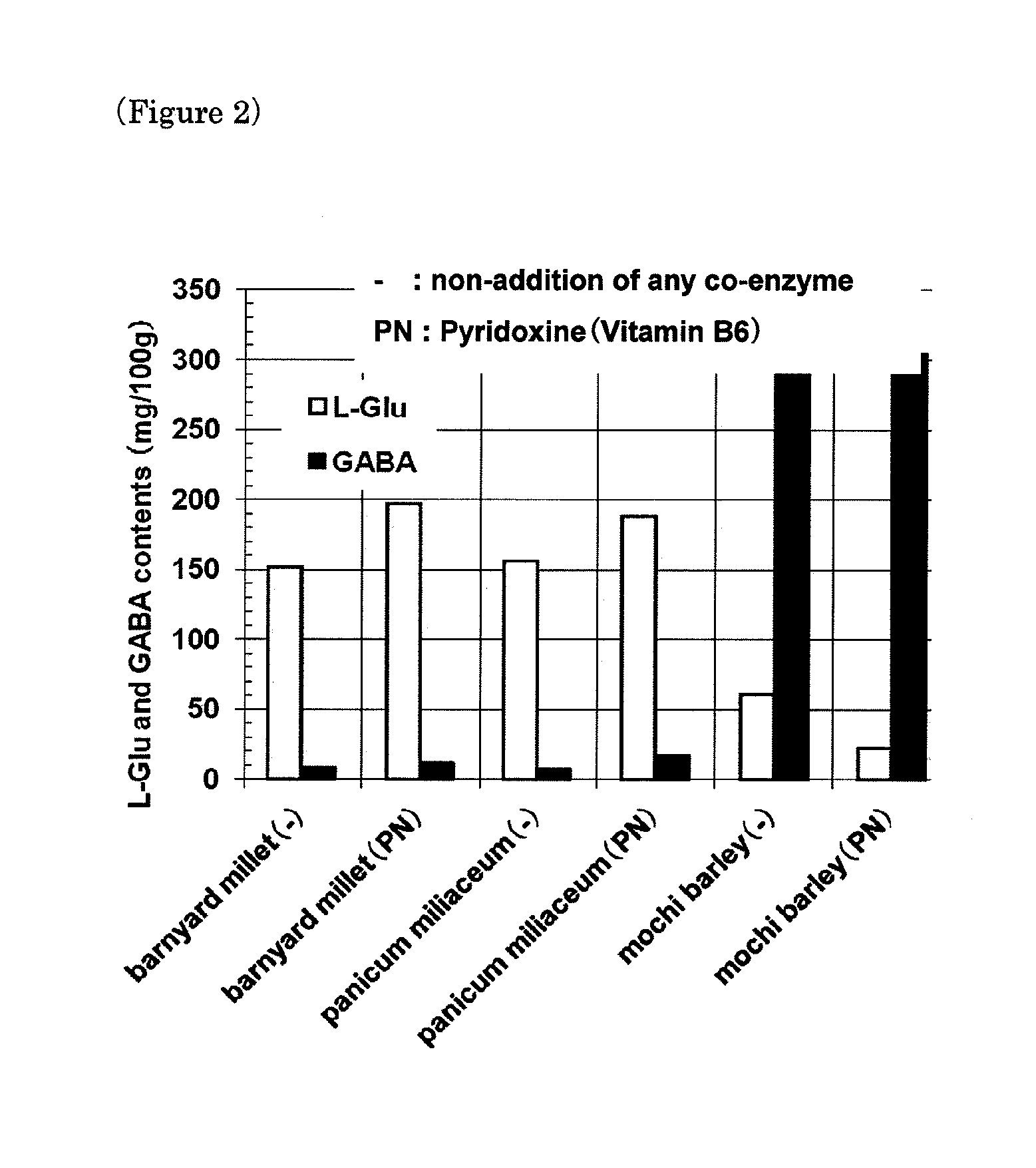Method for producing gaba mochi barley containing gaba and product thereof
- Summary
- Abstract
- Description
- Claims
- Application Information
AI Technical Summary
Benefits of technology
Problems solved by technology
Method used
Image
Examples
example 1
[0020]FIG. 1 relates to one embodiment of a process for the method for highly-effective production of a GABA mochi barley grains and a GABA mochi barley product from unpolished barley according to the present invention.
[0021]With reference to the given numerals, 50g of grain crops like mules barley and mochi barley 1 were polished with a rice milling device to give polished barley 2, and at step #4 which was then soaked overnight in 100 ml of L-glutamic acid solution at pH of from 3 to 5 at room temperature, and at step #5 which was drained off, and at step #6 which was further kept overnight at the temperature in a state where it is still somewhat wet.
[0022]At Step #7, the incubated barley grains which have been treated with glutamic acid were dried for 3 hours at 65° C.
[0023]Sample 8 of the dried barley grains was ground with a bean mill.
[0024]To the ground Sample 3, 30 ml of 2% (W / V) of sulfosalicylic acid was added and shaken vigorously for 10 minutes.
[0025]After centrifugal sep...
example 2
[0043]Explanations are given for FIG. 8 with reference to the numerals. When mochi barley bran and a glutamic acid solution (#12) are mixed with each other (Step #9) and kept overnight (about 15 hours), 30% GABA production (#11) was observed for the mochi barley bran and bran supernatant (i.e., supernatant after centrifugal separation). Centrifugal separation treatment (1000×g, for 10 min, Step #10)) was carried out. As a result, the supernatant (solution) and bran (precipitates) were obtained (#10). Processes and results of the experiment are illustrated in FIG. 8. After mochi barley was polished to 20 to 25% with a barley milling device, a GABA mochi barley bran product can be produced by using the remaining bran as a raw material. Further, the supernatant obtained after the centrifugal treatment can be used as GABA-containing mochi barley bran supernatant. Drying GABA mochi barley bran by heat treatment for about 3 hours at 65° C. to 70° C., which achieves sterilization, is an ef...
PUM
 Login to View More
Login to View More Abstract
Description
Claims
Application Information
 Login to View More
Login to View More - R&D
- Intellectual Property
- Life Sciences
- Materials
- Tech Scout
- Unparalleled Data Quality
- Higher Quality Content
- 60% Fewer Hallucinations
Browse by: Latest US Patents, China's latest patents, Technical Efficacy Thesaurus, Application Domain, Technology Topic, Popular Technical Reports.
© 2025 PatSnap. All rights reserved.Legal|Privacy policy|Modern Slavery Act Transparency Statement|Sitemap|About US| Contact US: help@patsnap.com



